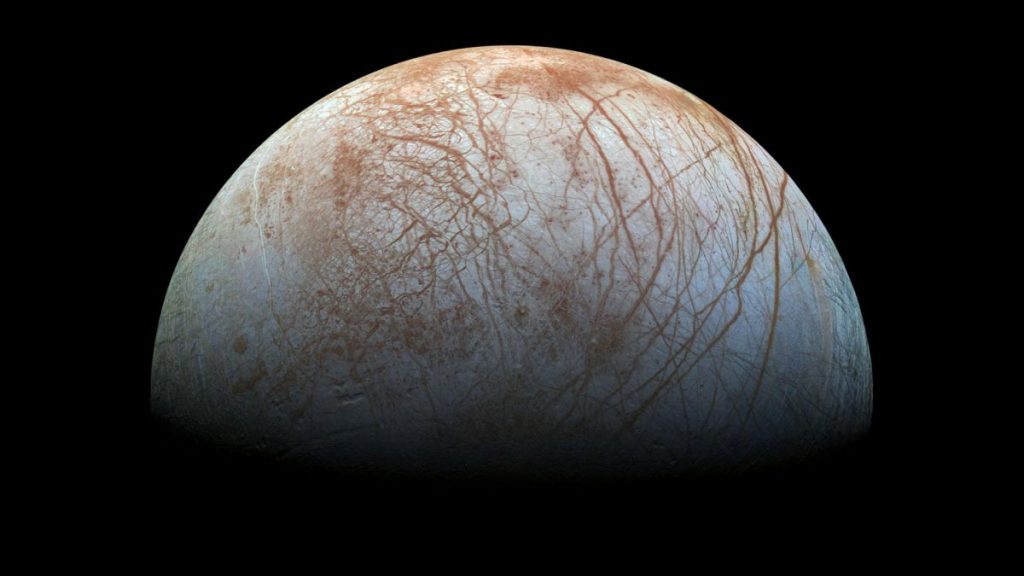
Underwater snow on Earth could offer insight into Europa’s icy crust (Image Credit: Space.com)
Studying unusual processes of how ice accumulates below ice shelves here on Earth could hold lessons for the exploration and habitability of Jupiter’s moon Europa.
In a new study, researchers studied two types of underwater snow found on Earth as an analog for understanding how Europa’s shell thickens from below. Frazil ice forms in supercooled water columns and floats upward to accrete onto the bottom of ice shelves, while congelation ice grows directly from under the ice shelf. Intriguingly, the researchers determined that ice formed by these processes retains just a fraction of the salt from the water from which it formed. Frazil ice retains just 0.1% of the ocean’s salinity and could be common on Europa, according to the study, suggesting that Europa’s ice shell could be orders of magnitude purer than previous estimates.
“When we’re exploring Europa, we’re interested in the salinity and composition of the ocean, because that’s one of the things that will govern its potential habitability or even the type of life that might live there,” the study’s lead author Natalie Wolfenbarger, a graduate student researcher at the University of Texas Institute for Geophysics, said in a statement.
Related: NASA spacecraft snaps gorgeous new photo of Jupiter’s moons Io and Europa
The new information may be of great value in informing upcoming exploration of Europa. NASA’s Europa Clipper mission is expected to launch in 2024 and arrive at the icy world in 2030, and the level of salt trapped in the ice can affect what and how deep the radar on the spacecraft will be able to see into the ice shell. Getting a good idea about the crust’s composition before arrival will help scientists make sense of the data after the spacecraft gets to work.
Europa is one of Jupiter’s four large moons, or Galilean satellites, and is roughly the size of the Earth’s moon. While it has a rocky mantle much like Earth’s, scientists believe that Europa’s mantle is surrounded by a hidden ocean of water and ice between 50 and 105 miles (80 and 170 kilometers) thick.
Previous studies suggest the temperature, pressure and salinity of Europa’s ocean nearest to the icy crust is similar to that found beneath an ice shelf in Antarctica.
The paper was published in the August edition of the journal Astrobiology.
Follow us on Twitter @Spacedotcom and on Facebook.





